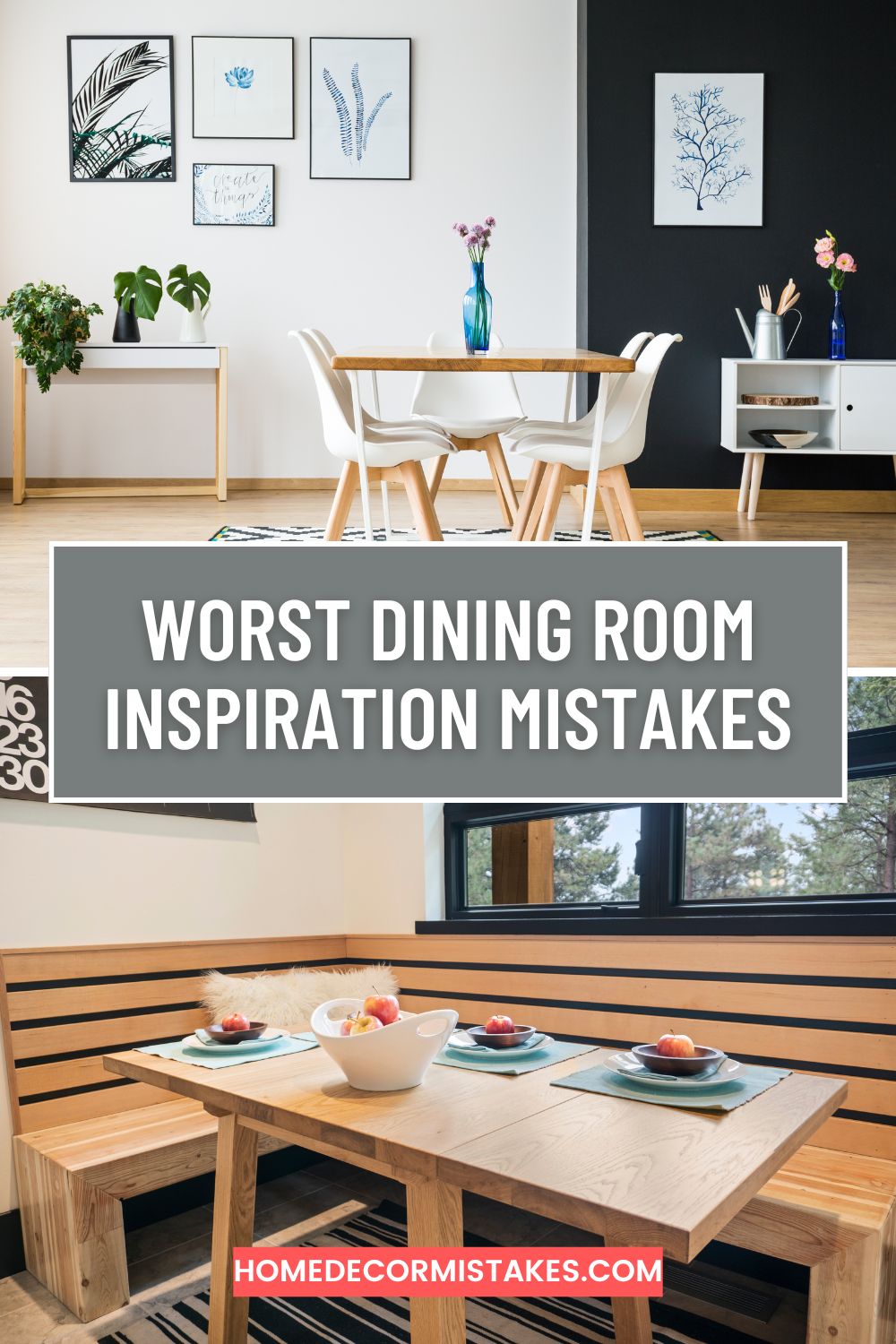Dining Room Inspiration Mistakes: What Everyone Gets Wrong
When it comes to designing the perfect dining room, inspiration is abundant. From Pinterest boards to home décor magazines, there’s no shortage of ideas. However, even with all this inspiration, there are common mistakes that many people make. These errors can hinder the functionality and aesthetic appeal of your dining space. In this blog post, we’ll explore some of the most frequent dining room design mistakes and how you can avoid them.
Choosing the Wrong Table Size
One of the most critical elements in a dining room is the table. Yet, many people choose tables that are either too large or too small for their space. A table that’s too big can overwhelm the room, making it feel cramped and difficult to navigate. Conversely, a table that’s too small can look out of place and fail to accommodate enough guests.
How to Avoid This Mistake:
- Measure Your Space: Before purchasing a dining table, measure your dining room’s dimensions. Ensure there’s at least 36 inches between the table and the walls to allow for comfortable movement.
- Consider Your Needs: Think about how many people you typically entertain and choose a table that can accommodate everyone comfortably.
Ignoring Lighting
Lighting is crucial in any room, but it’s especially important in the dining room. Poor lighting can make your space feel gloomy and uninviting. On the other hand, overly harsh lighting can be equally unappealing.
How to Avoid This Mistake:
- Layer Your Lighting: Use a combination of ambient, task, and accent lighting to create a balanced atmosphere. A chandelier or pendant light over the dining table can provide ambient lighting, while wall sconces or a buffet lamp can add task lighting.
- Dimmer Switches: Installing dimmer switches gives you control over the lighting intensity, allowing you to set the mood for any occasion.
Overlooking Comfort
While aesthetics are important, comfort should never be sacrificed. Uncomfortable chairs can turn a pleasant dining experience into an ordeal.
How to Avoid This Mistake:
- Test Before You Buy: If possible, sit in the chairs before purchasing. Ensure they provide adequate support and are comfortable for extended periods.
- Add Cushions: If your chairs are stylish but not particularly comfortable, adding cushions can be a simple yet effective solution.
Skipping a Focal Point
A well-designed dining room should have a focal point that draws the eye and anchors the space. Many people neglect this element, resulting in a room that feels disjointed and lacks cohesion.
How to Avoid This Mistake:
- Statement Lighting: A striking chandelier or pendant light can serve as an excellent focal point.
- Artwork: A large piece of art or a gallery wall can also act as a captivating focal point.
Neglecting the Flow
The flow of your dining room is essential for both functionality and aesthetics. A poorly arranged space can feel chaotic and uncomfortable.
How to Avoid This Mistake:
- Plan the Layout: Consider how people will move around the room. Ensure there’s enough space for guests to pull out their chairs and move around comfortably.
- Consistent Style: Maintain a consistent style throughout the room to create a sense of flow and cohesion.
Forgetting Storage
Storage is often an afterthought in dining room design, but it’s essential for keeping the space organized and clutter-free.
How to Avoid This Mistake:
- Buffets and Sideboards: These pieces of furniture can provide ample storage for dining essentials like tableware, linens, and serving dishes.
- Built-In Storage: If you have the space and budget, built-in storage solutions can be both functional and stylish.
Overdecorating
While it can be tempting to fill your dining room with all your favorite décor pieces, overdecorating can make the space feel cluttered and overwhelming.
How to Avoid This Mistake:
- Less is More: Focus on a few key pieces that you love and that complement the room’s overall aesthetic.
- Edit Regularly: Periodically assess your dining room décor and remove any items that don’t serve a purpose or add to the room’s aesthetic.
Conclusion
Designing a dining room can be a challenge, but by avoiding these common mistakes, you can create a space that is both beautiful and functional. Remember to measure your space accurately, choose comfortable seating, layer your lighting, and maintain a sense of flow and cohesion. With these tips in mind, your dining room will be a place where you and your guests love to gather.

